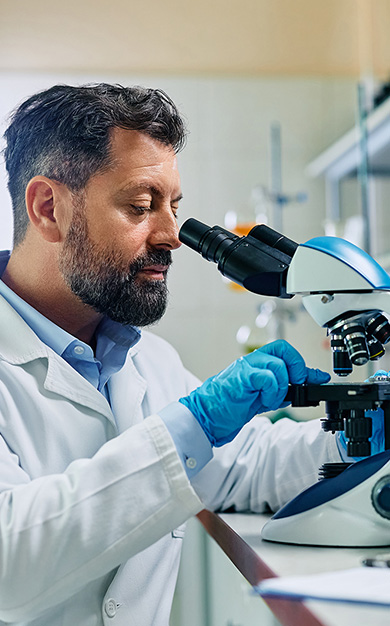Age-Related Macular Degeneration: Getting the Help the You Need
Featuring
Ranjoo K. Prasad, O.D.
Penn Medicine
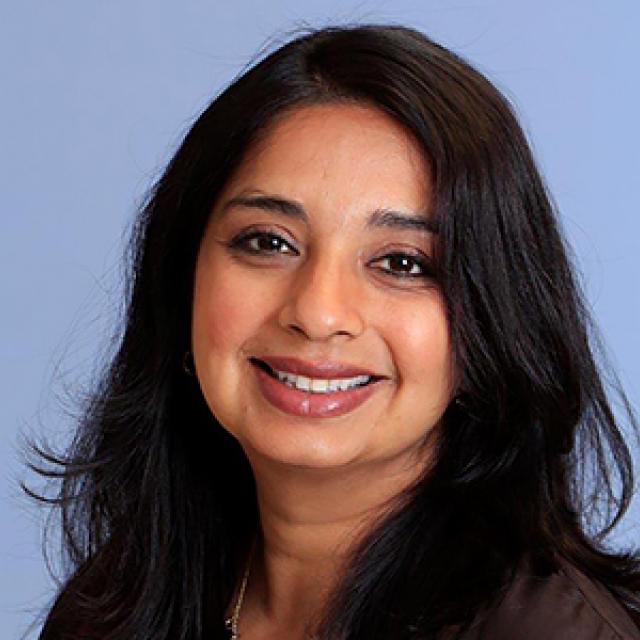

Ranjoo K. Prasad, O.D.
Penn Medicine

Ranjoo K. Prasad, O.D., a specialist in low vision rehabilitation at Penn Medicine, is the guest speaker.
BrightFocus Foundation
AMD: Getting the Help You Need
June 27, 2018
1:00–2:00 pm EDT
Transcript of Teleconference with Dr. Ranjoo Prasad, a specialist in low-vision rehabilitation at the University of Pennsylvania Medical Center in Philadelphia.
The information provided in this transcription is a public service of BrightFocus Foundation and is not intended to constitute medical advice. Please consult your physician for personalized medical, dietary, and/or exercise advice. Any medications or supplements should be taken only under medical supervision. BrightFocus Foundation does not endorse any medical products or therapies.
Please note: This Chat has been edited for clarity and brevity.
MICHAEL BUCKLEY: Hello, I’m Michael Buckley with the BrightFocus Foundation. Welcome to today’s BrightFocus Chat, “AMD: Getting the Help You Need.” If this is your first time on a BrightFocus Chat, welcome, and I just want to give you a little overview of what we’ll do today.
BrightFocus Foundation funds research on macular degeneration, glaucoma, and Alzheimer’s disease. We currently are supporting about 200 scientific projects around the world. As part of that, we want to share the latest news and best practices from the world of research and other experts. That’s why we do the BrightFocus Chats. It gives us an opportunity to share this information with you. We have a number of materials available on our website, www.BrightFocus.org.
Let me tell you a little about today’s Chat, “AMD: Getting the Help You Need.” We are very fortunate to have a return guest with us today, Dr. Ranjoo Prasad. She is a specialist in low- vision rehabilitation at the University of Pennsylvania Medical Center in Philadelphia. We’ve been really fortunate to have Dr. Prasad with us on prior Chats. Dr. Prasad, I want to start off by welcoming you. I was wondering if you could tell our listeners a little bit about what you do at the University of Pennsylvania.
DR. RANJOO PRASAD: Well, thank you for having me. It is great to be back for another time. I am currently the director of the Penn Center for Low Vision Research and Rehabilitation with the Department of Ophthalmology at the University of Pennsylvania Health System, particularly the Sheie Eye Institute. I have been practicing for over 19 years—actually, this will be my 20th year coming up—and have been at this department for 17 years. And I have had extensive experience managing low-vision patients with the most common conditions (such as macular degeneration, glaucoma, diabetic retinopathy) and some of the rarest conditions as well. I also have a keen interest in international low vision and spent time earlier in my career consulting overseas.
MICHAEL BUCKLEY: Wow, that’s really impressive. Just out of curiosity, how did you end up in this line of work?
DR. RANJOO PRASAD: Well, it’s interesting, because it wasn’t something I thought about while I was in optometry school. I worked with a low-vision specialist during my training and I realized that this was an area that had the greatest need. For myself, I believed that it would have the greatest impact and reward, and I was not wrong.
MICHAEL BUCKLEY: That’s great. It seems like you make a really big difference in people’s lives. You use the term “low vision.” We use it a lot here at BrightFocus. I think it’s a term people use more than they understand. What exactly does low vision mean?
DR. RANJOO PRASAD: Well, people define it differently, I would say. But low vision for me is a reduction in visual function second to an eye condition, which cannot be corrected with medical, surgical, or conventional optical means. Some people have a cutoff or some definitions have a visual acuity cutoff. I believe that you can still have pretty decent vision but still have a reduction in visual function, so basically you’ll have difficulty reading, seeing faces—as a result of an eye condition that can’t be cured or corrected, I should say.
MICHAEL BUCKLEY: Thank you for that elaboration. Another term that people use a lot and may not understand is “legally blind.” What does legally blind mean? If the word “legal” is in there, is there a consequence or implication for being declared legally blind?
DR. RANJOO PRASAD: The Social Security Administration or the government determines the definition of legal blindness. They have visual acuity and visual peripheral field requirements. You have to be 20/200 or worse in the better-seeing eye or a less than 20-degree peripheral visual field in the better-seeing eye. Once you’ve been certified as being legally blind, you then can receive all benefits that pertain.
MICHAEL BUCKLEY: Thank you. In your field of low-vision therapy I know there are a lot of different letters that come after people’s last names. Think about the Marx Brothers’ alphabet soup. Could you just briefly tell us about some of the common letters that would appear in someone’s title? And if you are a patient or family member, what ones might be a good fit for you?
DR. RANJOO PRASAD: As you said, there are many specialists with many different letters and titles after their name. Some of the most common ones are CLVT, CVRT, OT, and there’s a CIAT. The letters seen in front of any of these titles are certifications—certified through the Academy for Certification of Vision Rehab and Education Professionals, which is a national certifying organization that sets professional standards.
So an LVT is a low-vision therapist. They work with those who are blind and visually impaired. They train and provide adaptive help and techniques. A VRT is a vision-rehab therapist. They deal with people who are blind. A CATIS is a person who deals with assistive technology. Actually, their exact terminology is assistive technology instructional specialist. They deal with assistive technology, computer software, mobile devices, tablets, et cetera.
MICHAEL BUCKLEY: Wow. That is impressive. I think that is really helpful. How would someone find a low-vision specialist in his or her community? And then one that has the proper specialization? Is there some sort of resource guide that people can seek out?
DR. RANJOO PRASAD: The first step would be to let their eye doctor know, because most of the eye doctors would have some knowledge of the low-vision specialists in their area. The second would be to contact any of the state or county agencies. Every state has an agency for the blind and visually impaired, so they would be a great way to get in touch and get in contact with a low-vision specialist.
MICHAEL BUCKLEY: Great. Do you find that in your experience physicians are pretty well- versed in the services that specialists like you provide? Or do you think there’s some more that can be done to help people get referred to this type of help?
DR. RANJOO PRASAD: Yeah, I think they are pretty well-versed, as it is part of their professional training when they do their residency—and because they are dealing with so many patients who may need this. I’m sure they have the knowledge of it. One of the things I found interesting because there are so many changes, which occur in their field itself as far as technology changing, are different types of providers that come and go. They may not be aware of the changes, so it is up to us to educate them and let them know what is available.
MICHAEL BUCKLEY: Thanks. If you don’t mind a couple more questions relating to that about the process in which a patient is then referred to a specialist. Do patients usually need a referral to see a low-vision specialist?
DR. RANJOO PRASAD: They don’t need a referral from an eye doctor. I have had patients that come to me that found out on their own. If we are talking about insurances, they may have a particular type of insurance that requires a referral. That’s something different. What I recommend is that they have some information or prior notes or records to let us know what their vision problems are, what their diagnosis is, and preferably what level of visual acuity they have. This will give us some background information about what we are working with and also determine if there are any changes in their condition. Any changes in condition—there are acuities that we would know to refer them back sooner than later.
MICHAEL BUCKLEY: Great. That just made me think of two questions. One, you mentioned the insurance. Does Medicare cover services like this?
DR. RANJOO PRASAD: Yes, because the way we evaluate, code, and bill it would be considered a medical visit. So yes, they would cover it.
MICHAEL BUCKLEY: Great, and you mentioned the medical notes. From a patient perspective, sometimes it can seem a little overwhelming where there are different physicians, different specialists. What can the patients do to almost act as the general contractor for their own health and kind of keep everybody as informed and coordinated as possible? Any tips for us as patients?
DR. RANJOO PRASAD: Yeah, well the one thing is where the patients do not have to do things, because with many of the big health systems their electronic medical records are now connected with each other. So we have access to it, so if they go within a big health system, we could see what goes on somewhere else or with another doctor. However, that is not the case all the time, so one of the most important things is to keep a written list or a running list of the different providers that you have. Your different medical diagnoses, your medications, prior surgeries—keep that with you at all times, and when you see the next provider or low-vision specialist, give that to them because that is very helpful. Keep track of all of the information that they give you: the sheets they sometimes give you a summary after. Just keep track of that. A lot of the times it is overwhelming because you have so much information. Even if you just bring all of your documentation, the doctors will be able to figure things out just by asking questions.
MICHAEL BUCKLEY: Well, great, that is real helpful. Dr. Prasad, we have a few questions that have come in already. What is the first step that you can take to hang on to your remaining vision?
DR. RANJOO PRASAD: The first step would be obviously to be very compliant with your doctor appointments. Go to your doctor each scheduled visit. Second, pay attention to your visual function. Make sure that there are no changes or immediate changes—so if that happens, obviously go back. So be very cognoscente and very aware, and talk to people and tell someone. Third of all, as far as hanging on to it—with many of these conditions, the vision is going to be stable. Therefore, the key is now to make sure that you can still function with it so you are still able to use it and utilize it—and that is where our field comes in.
MICHAEL BUCKLEY: We have a caller that is wondering if you have AMD in your extended family tree, is that something you should be concerned about?
DR. RANJOO PRASAD: Absolutely, it’s something that you should definitely let your providers know. Multiple studies have shown that there is a strong genetic predisposition to it. So yes, definitely be aware of it.
MICHAEL BUCKLEY: Yeah, I appreciate that. Switching gears to maybe some of the things you work with your patients on: Are there ways you help your patients with life around the house? Particularly with lighting—and we know that many people suffer falls at home and that is the reason why they can no longer live in their own home. Do you help with lighting or fall prevention or things like that?
DR. RANJOO PRASAD: Oh, absolutely. So fall prevention is probably one of my top priorities because I think that there was a study done by the CDC where they found that in 2014, over half of the people with vision loss had reported falling in that year. So that’s a priority for me. I always ask questions about their home environment. One thing after further questioning—and they say that they are having difficulty and are afraid of falling—I ask how cluttered is it. Because you want to make sure that the house is clutter-free, the walkways are clear—also, make sure that the lighting is good too. That also varies, depending on the house and ceiling size.
You want to make sure that the curtains are not at the ground level, but slightly above so you do not trip on them. Use rounded tables instead of tables with squares on it so you do not hurt yourself—tables without edges on it, sharp edges. The other important thing is to actually bring a rehab specialist into the home to evaluate and to help you optimize the environment so it’s safe for you.
MICHAEL BUCKLEY: That is all great advice. Another type of lighting that people here ask about on a regular basis is on the computer or phone or tablet. Do you have advice for the back lighting and other parts of being digitally connected?
DR. RANJOO PRASAD: Fortunately, the phones have advanced and improved so much that there is so much that you can do with the light. So a lot of the times people get or have problems with the glare when it’s too bright. So you want to dim it down just so it’s acceptable for you. The other thing that is very helpful is reversing the contrast. So having white print on a black background tends to work too. Again, it does not work for everybody. So you have to kind of play around with it or go to an assistive technology specialist to help you.
MICHAEL BUCKLEY: That’s real helpful. We have a question here wondering about cataracts. Do cataracts put you at risk for low vision? And related to that: When you work with patients that also have cataracts, how does that factor into your help?
DR. RANJOO PRASAD: It factors—it has a big role in it. People who have vision loss, especially where one eye is significantly better than the other is and they have a secondary cataract on top of it—those patients will find that it is even more difficult and get more glare caused by it. A lot of the surgeons are very reluctant to remove a cataract on the good eye. So we address that by lighting, helping with the light, using filters, helping with contrast. So yeah, cataracts do play a big role into how well you’re seeing with a visual impairment.
MICHAEL BUCKLEY: Dr. Prasad, I want to turn to a question that is probably very difficult for many families with vision issues, and that’s driving. We had a caller who was saying that there is sort of a disincentive to get treatment from an eye care professional because wouldn’t that trigger concerns with your state’s motor vehicle agency. So I just want to use that as sort of an entry point to your kind of big-picture suggestions for families as they work through the medical and emotional and other issues attached to driving.
DR. RANJOO PRASAD: I encounter driving quite often. Another recent study has shown that driving is the second most common concern for patients who have a visual impairment. I try to explain to the families and patients that this is something that cannot be overlooked. However, I try to reassure them. So if they are in the earlier stages, I try to explain to them that most states have drivers’ requirements and it varies. So first and foremost, we need to determine if you’re within the state legal limits. If you’re within the legal limits and you’re seeing a little worse than driving without restrictions, you can qualify for a restricted license. So that tends to be reassuring for patients as well.
I also try to reassure them that if you get to a point that you cannot drive, there are other transportation opportunities, or there are modes of transportation. Almost every state or city has a local medical transport; Uber is very popular, taxicabs. It is a very sensitive issue or topic, but I try to be as helpful and resourceful as possible. Now, regarding letting the state know, different states have different requirements once again. I am going to give the example of the state of Pennsylvania. We are required by law to inform the state when a patient does not meet the legal requirements. Once we let them know, we do not take the license away. They make the final decisions.
MICHAEL BUCKLEY: This is very helpful. Do you have tips for having that very difficult conversation in a family setting about someone’s driving and the future of that?
DR. RANJOO PRASAD: Yeah, again that’s a tough one. One of the things I always tell them is that, again, don’t be afraid. It’s something that is necessary and it’s also a legal matter here. And the one thing I also emphasize is that I do understand, and that the family understands the loss of independence and how difficult that is. However, should something happen, there is a lot that is at risk—not just people’s lives but also what you can lose if something were to happen and you should be driving in the first place. So I try to say, and when I put it in the regards of losing, then people tend to be more open to it. However, there is a lot at risk.
MICHAEL BUCKLEY: I think you’re exactly right, Dr. Prasad. We as a culture have set value on independence so much that, in your experience, after families have these conversations, do things get better at some point? What is on the other side of that conversation?
DR. RANJOO PRASAD: It depends on the patient. I have had patients who become very angry with me, extremely angry, which is understandable. But then their families are very grateful because they tried to have that conversation and it is very difficult. But once they hear it from the provider and the doctor, it’s a little bit easier. One of the things I do is I show them the state requirements or I explain in detail what the numbers are. I explain to them where they stand, where they fall, and where their numbers are, for example, with visual acuity. I also do a driving visual field to prove and to say that you are within or not within visual limits to drive. Usually, when you have it on paper like that it’s black and white, and a little bit easier to understand or accept. Well, I don’t want to say accept because everyone accepts things differently.
MICHAEL BUCKLEY: Yeah. I think that is great to do. It tries to lower the temperature on the conversation and make it very factual. It is interesting you mentioned anger a minute ago and that people may be angry. I want to turn to the emotional side of this—things like anger, grief, depression, and adjustment to declining vision. As you work with your patients, how do you address some of those issues?
DR. RANJOO PRASAD: One of the questions that I ask—and it’s one question, one sentence. I basically ask, “How are you coping?” and that typically opens the floodgates. People will tell me how they are coping and I’ve noticed that before I ask that question, many patients have themselves together, they are okay. But once I ask that, they release themselves and explain how much difficulty they are having with coping with their vision loss. As we know, it’s a grieving process. Just like how we grieve when we lose a significant other, a loved one, a pet. You go through the same stages of grief and it is very hard.
MICHAEL BUCKLEY: Yeah. We have a question that relates to some of that. The person says that they feel, when they have emotional stress related to vision loss, it seems like that emotional stress in the moment makes their vision more blurry. Are there any mind and eye connections in that regard?
DR. RANJOO PRASAD: I personally think there is. I think people who come in with a lot of emotional stress, or stresses of other things caused by their vision loss or outside their vision loss, they aren’t able to focus as well. They aren’t seeing as well. One of the things with macular degeneration is that there are certain parts of the macula that work better and you’re able to isolate that more. Sometimes you aren’t able to when you are stressed. I don’t know if that’s been proven, but that’s how it seems to me.
MICHAEL BUCKLEY: Yeah. I think that’s another reminder of how important it is to address these issues. I know from our previous conversations that you helped lead a support group. I was wondering if you could tell us a little bit about what you do there and how you think it helps people.
DR. RANJOO PRASAD: One of the things that we found is that many people who have vision loss find themselves isolated and not connected with other people. What they found was that people who have sight don’t understand what they are going through. So starting our support group was recommended by one of our patients who has macular degeneration. We started it last year. We now have 42 registered members. We have about 15 members that come in typically at a time. It has been great. We’ve received great feedback, and people have connected with each other. They are able to talk about the grief, how they are coping, and just strategies too—how they’ve been able to adapt and adjust.
MICHAEL BUCKLEY: Yeah. That’s great. Staying on the support group topic for another moment—earlier when we talked about driving, we discussed independence and people want to feel that they are capable of running their own life quite well. How do you coax—that might not be the right word—but how do you get them into a support group—if they maybe have some predispositions against that type of support?
DR. RANJOO PRASAD: I’ve encountered that. After I asked the question about coping, they’ll tell me if they are having difficulty. Then I’ll ask if they are getting help or getting counseling. I’ll also suggest our support group to them. I usually ask them if they know of other people who have gone through the same thing or if they are interested in connecting with others. Once I say that, they usually say yes. For some that are hesitant, I will give them the information and say, “Whenever you’re ready, let us know.” We find that they do end up contacting us after a little bit.
MICHAEL BUCKLEY: That’s great. It seems like you put it on the front doorstep so that they can take it from there.
DR. RANJOO PRASAD: Yeah. Because they know that there is an option there. There is help. There are ways that can help them and ways to help them.
MICHAEL BUCKLEY: That’s great. It must be very rewarding. A last question related to support groups, grief, depression, and adjustments. Do you have any tips for family members of someone who is experiencing low vision? Whether it is the direct caregiver or extended family? Sometimes I think we don’t know what do to around a person. That can lead to some awkwardness or distance. Any tips for how family and friends can be supportive?
DR. RANJOO PRASAD: Yeah, I think that by attending their doctor’s appointments so that they understand the nature of the condition and what they are going through, and have dialogue with the doctors. We also found that some of our members bring their family members to the support group—not to be an active part of it, but just to listen. That is very helpful for them as well. Also, just being patient and as empathetic as possible. Patience is the key to just understand that they are grieving, that their loved one is grieving. They will go through all of the stages. Just be there to support them.
MICHAEL BUCKLEY: That’s interesting because all of us—well, I would assume many of us— want to fix problems. These seem like things that to some extent can’t be fixed. How do you address that with the family members—that element of it?
DR. RANJOO PRASAD: Yeah. It’s interesting because obviously the patients have the same questions too—I can’t fix it, so what do I do? That’s where low vision comes in. We teach adaptive techniques and use of assistive technology to use the vision you have remaining to make yourself more functional again. It’s just to understand that they will be independent, but things have to be done differently. Providing more reassurance—this is what’s out there and this is what we can do to help them.
MICHAEL BUCKLEY: Yeah, I think that’s a nice mixture of honesty and also very useful.
Dr. Prasad, I want to conclude by asking you about your big-picture advice that you may give to your patients. Is there a common misperception that you frequently try to address? What sort of philosophy do you use in helping people that are dealing with some of these challenges?
DR. RANJOO PRASAD: The one thing I always say is that I can’t bring back the vision that you’ve lost, but we can make the most of the vision that you have remaining. The key is not to give up and to be open and patient. Know that you will be able to read, you just won’t be able to read the same way as you did before. You will be able to see faces, just not the same way you did before. For those who have profound vision loss—because vision loss comes at all different levels—again, we can’t bring the vision back but there are ways that we can help you read again by using auditory techniques or your other senses. I always assure them. You will be independent. You just have to be patient and you have to give yourself time to learn. You have to learn things a little bit differently now. And don’t give up hope—there are a lot of ways we can help you—a lot of people, and we are here to help you.
MICHAEL BUCKLEY: That is great. I’m sure you reach people at a very challenging time. That is really very impressive and I think today you’ve given people a lot of specific advice or recommendations—things they can talk to their doctor about, like finding support services near them. I really appreciate you, once again, joining us today. Dr. Prasad, I just want to thank you very much for being so helpful to the BrightFocus audience.
DR. RANJOO PRASAD: Thank you, Michael, and thank you so much for having me.
MICHAEL BUCKLEY: Great. We hope we can have you back on a BrightFocus Chat real soon. To our audience, thank you very much for joining us today and we will talk with you soon. Thank you.
BrightFocus Foundation is a premier global nonprofit funder of research to defeat Alzheimer’s, macular degeneration, and glaucoma. Since its inception more than 50 years ago, BrightFocus and its flagship research programs—Alzheimer’s Disease Research, Macular Degeneration Research, and National Glaucoma Research—has awarded more than $300 million in research grants to scientists around the world, catalyzing thousands of scientific breakthroughs, life-enhancing treatments, and diagnostic tools. We also share the latest research findings, expert information, and resources to empower the millions impacted by these devastating diseases. Learn more at brightfocus.org.
Disclaimer: The information provided here is a public service of BrightFocus Foundation and is not intended to constitute medical advice. Please consult your physician for personalized medical, dietary, and/or exercise advice. Any medications or supplements should only be taken under medical supervision. BrightFocus Foundation does not endorse any medical products or therapies.

In recognition of National Caregivers Month, this episode explores the vital role of those who support individuals living with vision loss—whether family members, professionals, or volunteers.
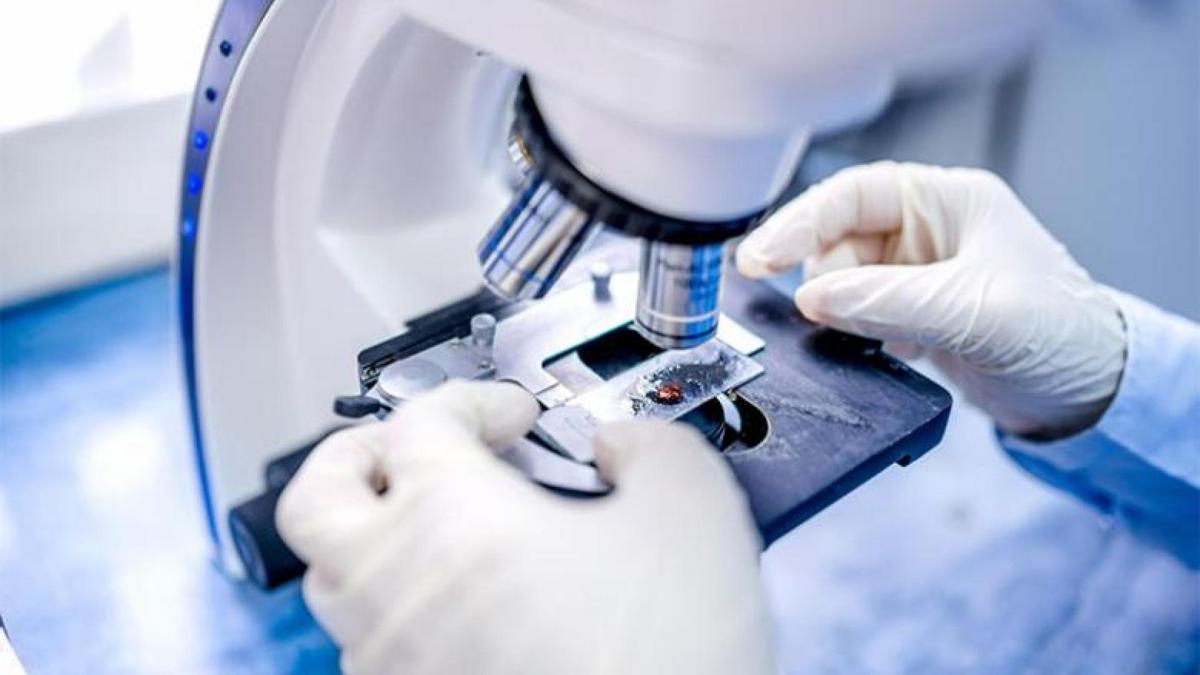
Dr. Jeffrey Stern and Dr. Sally Temple, Principal Investigators and Co-Founders of the Neural Stem Cell Institute, will explain what stem cells are and share the latest updates from clinical trials.
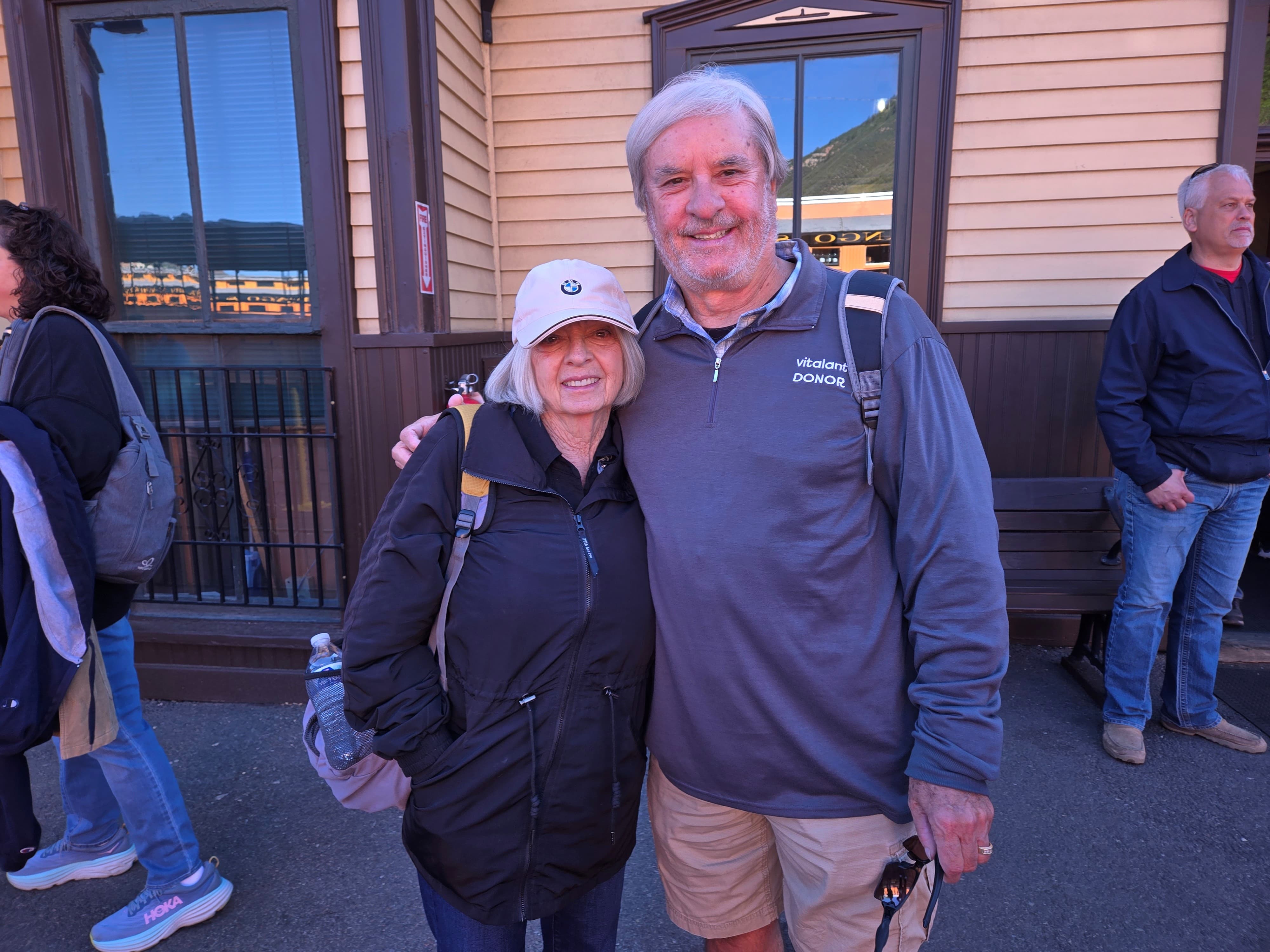
Dave and Leanna Palmer share their commitment to supporting Macular Degeneration Research.
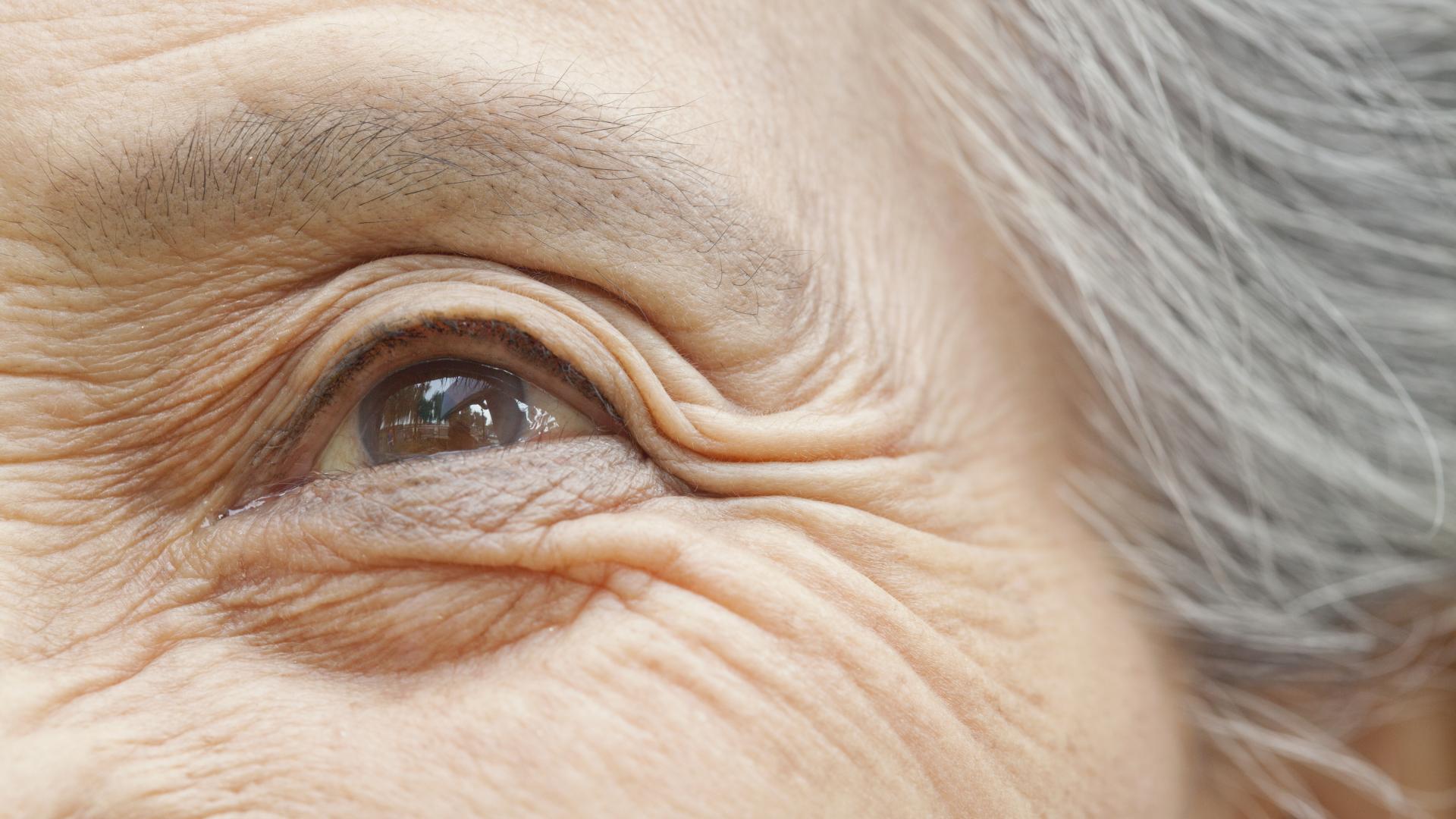
Join Dr. Sara Fard, a retina specialist at Illinois Retina Associates, as she explains the benefits of sustained GA treatment, including slowing the rate of vision loss, protecting retinal tissue, and supporting daily visual function.
Help Fight Macular Degeneration and Save Sight
Your donation helps fund critical research to bring us closer to a cure for this sight-stealing disease and provide vital information to the public.
Donate Today